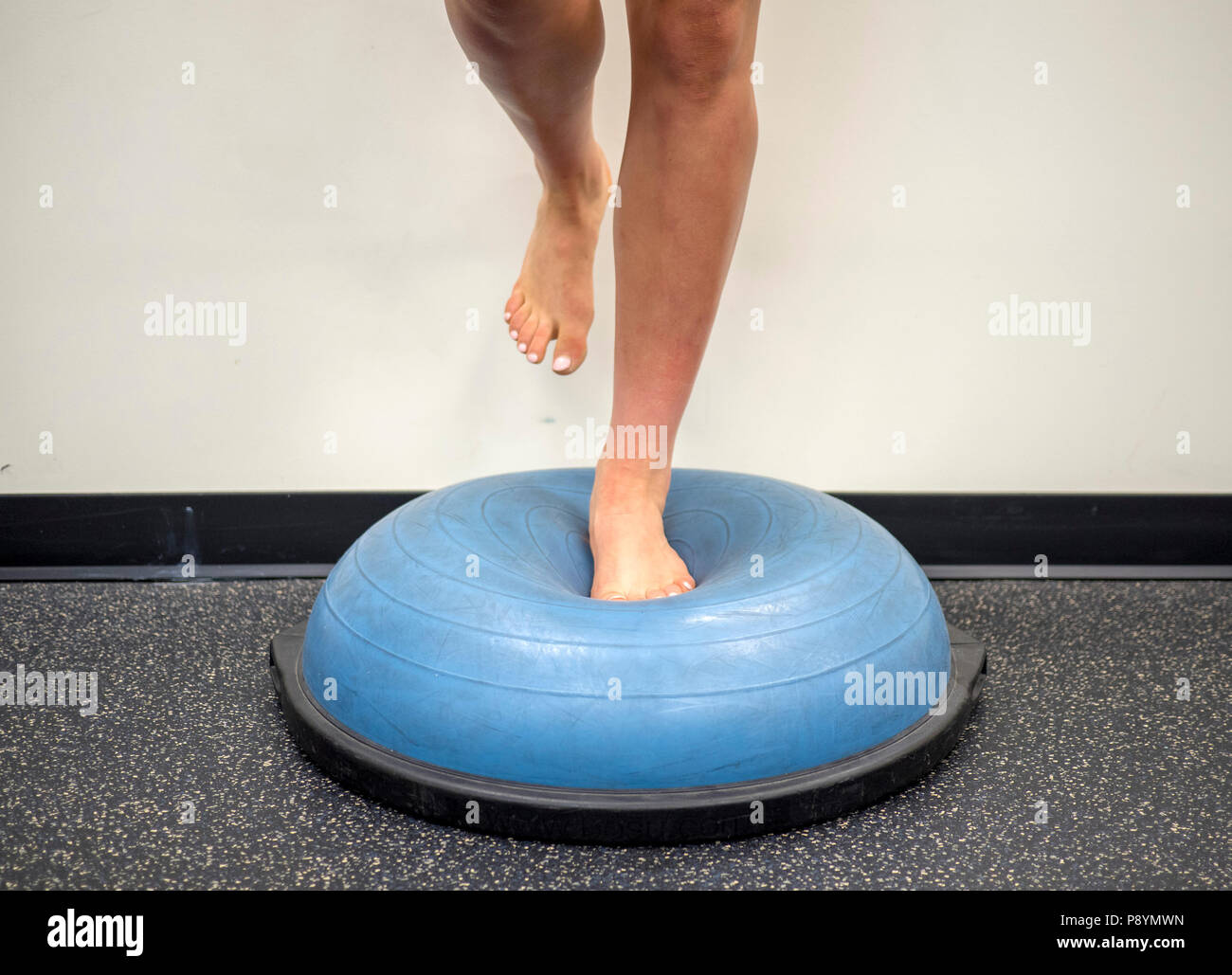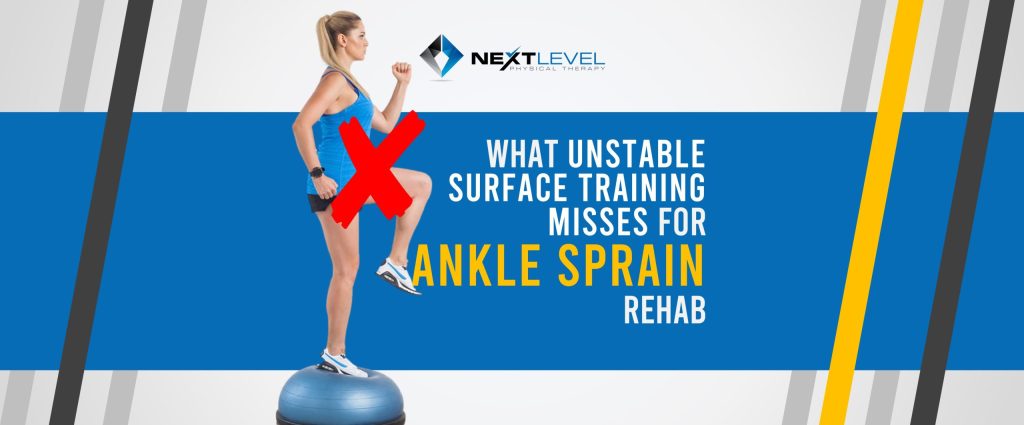Author: Dr. Colin Butler, DPT, ATC
The inversion ankle sprain is the most common injury in the world. Walking down the stairs and missing a step. Getting bumped in the air during a layup and landing on the outside of the foot. In an instant, force is applied through the outside of the foot and ankle at a speed the ligaments and surrounding tissues cannot rebound from, as shown in Image 1 below.

Like most acute injuries, damage to the bones, muscles, ligaments, and tendons triggers inflammation. This response helps clear damaged tissue and initiate healing. Swelling follows as part of this process and gradually decreases as the acute phase of injury resolves.
Once ankle and foot range of motion is restored, one of the most commonly prescribed interventions is unstable surface training. This usually involves standing on a foam pad, wobble board, or BOSU ball while maintaining balance and foot contact.
The idea behind this approach is that standing on an unpredictable surface forces the ankle and center of gravity to adjust continuously. This is thought to retrain body awareness and reduce the tendency to place force through the outside of the foot, which could lead to another ankle sprain.

There is nothing inherently wrong with this concept. For athletes and active individuals, the ability to respond to unexpected perturbations and regain control is important.
The issue lies in how well this type of training transfers to real world movement and sport demands.
Most sports are performed on solid surfaces such as hardwood courts, turf, grass, asphalt, or concrete. These surfaces do not yield the way unstable surfaces do.
The yielding nature of unstable surfaces makes it difficult to place the ankle, foot, and rest of the body into positions that are optimal for producing force to slow down, absorb load, and change direction safely.
Clinically, individuals with recurrent ankle sprains often struggle to control internal rotation through the foot, ankle, and hip. Internal rotation represents the ability to drive force down into the ground beneath the body.
To slow down effectively during landing, the body must apply force into the ground over time. To redirect movement, it must quickly produce force again to push away from the surface.
If you attempt to produce downward force while the foot and limb remain oriented toward external rotation, force continues to be directed toward the outside of the foot instead of directly beneath the body. This limits your ability to reduce sprain risk.
In the example referenced above, notice how the foot may be on the unstable surface, but the shin remains oriented outward relative to the body.
This brings up an important question.
How do we retrain the ability to produce force directly beneath the body rather than outside of it?
The first step is developing coordination in a low demand position, such as the supine cross connect shown in Video 1.
Video 1: Supine Cross Connect
This exercise helps align the foot, knee, hip, and rib cage while pressing into a fixed surface. The wall simulates the ground, allowing you to learn proper force direction without the complexity of standing balance.
Progression: Low Step Up Cable Chop
Once this pattern is solid, the next step is transferring it to a standing position.
Video 2: Low Step Up Cable Chop
In this exercise, the stance leg is positioned directly under the body while the cable or band chop helps guide force into the inside portion of the foot. This reinforces proper alignment and force production during upright movement.
These exercises are just two examples of how to retrain the ability to absorb and generate force without directing bodyweight toward the outside of the foot.
To be truly prepared for sport or high level activity, these principles must eventually be trained at higher speeds, under greater loads, and repeatedly without fatigue altering mechanics.
If you have tried unstable surface training and still feel that your ankle does not function the way you expect after an injury, this approach may be worth exploring. If you have questions, feel free to reach out and continue the conversation.



